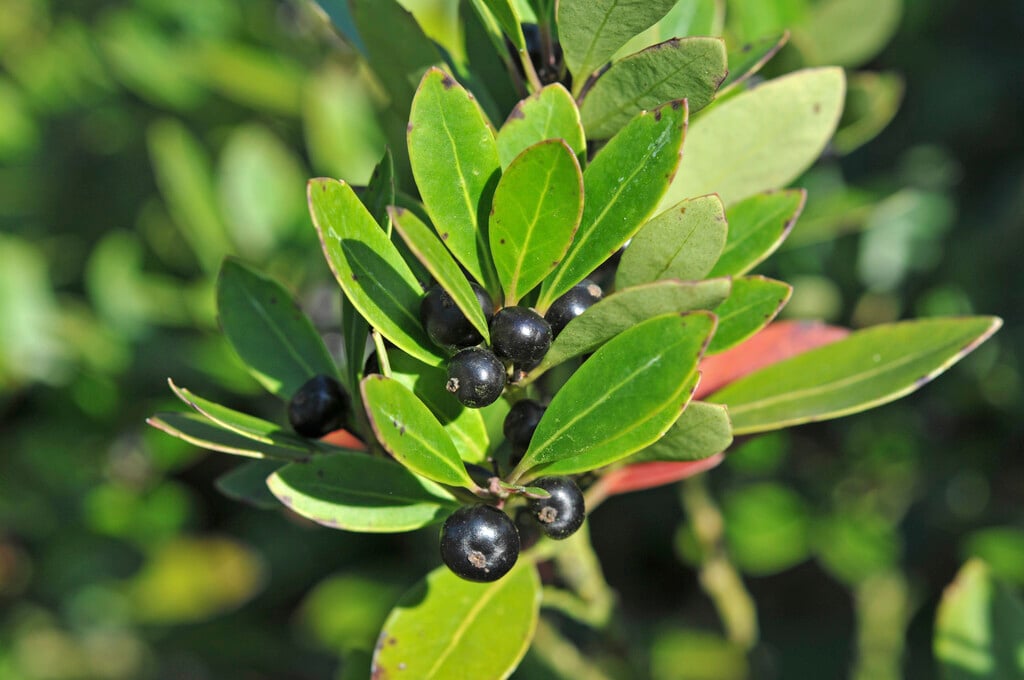Ilex glabra
inkberry
Dense, rounded evergreen shrub up to 3m in height, with small spineless oval-shaped, glossy dark green leaves, in some forms, the foliage turns purplish in winter. In spring, clusters of white flowers appear followed by small black berries on female plants if pollinated by a male plant
Size
Ultimate height
1.5–2.5 metresTime to ultimate height
10–20 yearsUltimate spread
1.5–2.5 metresGrowing conditions
Moisture
Moist but well–drained, Poorly–drainedpH
Acid, NeutralColour & scent
| Stem | Flower | Foliage | Fruit | |
| Spring | White | Green | ||
|---|---|---|---|---|
| Summer | Green | |||
| Autumn | Green | Black | ||
| Winter | Green Purple |
Position
- Full sun
- Partial shade
Aspect
West–facing or South–facing or East–facing
Exposure
Exposed or Sheltered Hardiness
H7Botanical details
- Family
- Aquifoliaceae
- Native to GB / Ireland
- No
- Foliage
- Evergreen
- Habit
- Bushy, Suckering
- Potentially harmful
- Fruit are ornamental - not to be eaten. Wear gloves and other protective equipment when handling. Pets: Fruit are ornamental - not to be eaten - see the HTA guide to potentially harmful plants for further information and useful contact numbers
- Genus
Ilex can be deciduous or evergreen shrubs and trees with often spiny leaves, small white flowers (male and female usually on separate plants) and, on female plants, showy berries in autumn
- Name status
Correct
How to grow
Cultivation
Grow in moist to poorly drained, humus-rich neutral to acidic soil in sun or partial shade
Propagation
Propagate by semi-ripe cuttings in late summer or early autumn or propagate by hardwood cuttings in January with bottom heat
Suggested planting locations and garden types
- Architectural
- City and courtyard gardens
- Cottage and informal garden
- Patio and container plants
- Low Maintenance
- Flower borders and beds
- Hedging and screens
Pruning
Pruning group 1; trim hedges in early spring
Pests
May be susceptible to scale insects, holly leaf miner and young shoots may be susceptible to aphids
Diseases
May be susceptible to holly leaf blight, Phytophthora root rot and sometimes honey fungus
Get involved
The Royal Horticultural Society is the UK’s leading gardening charity. We aim to enrich everyone’s life through plants, and make the UK a greener and more beautiful place.
